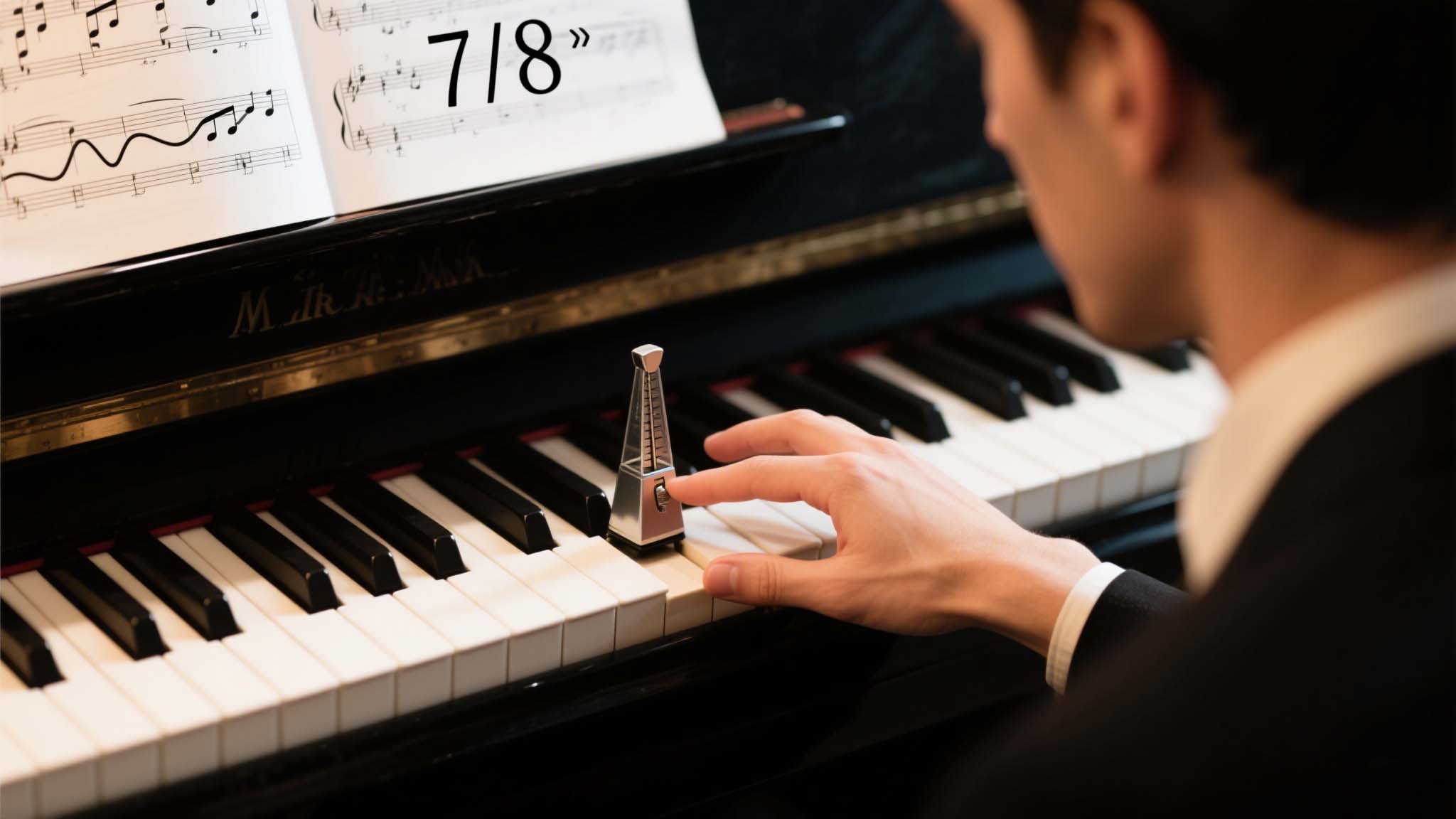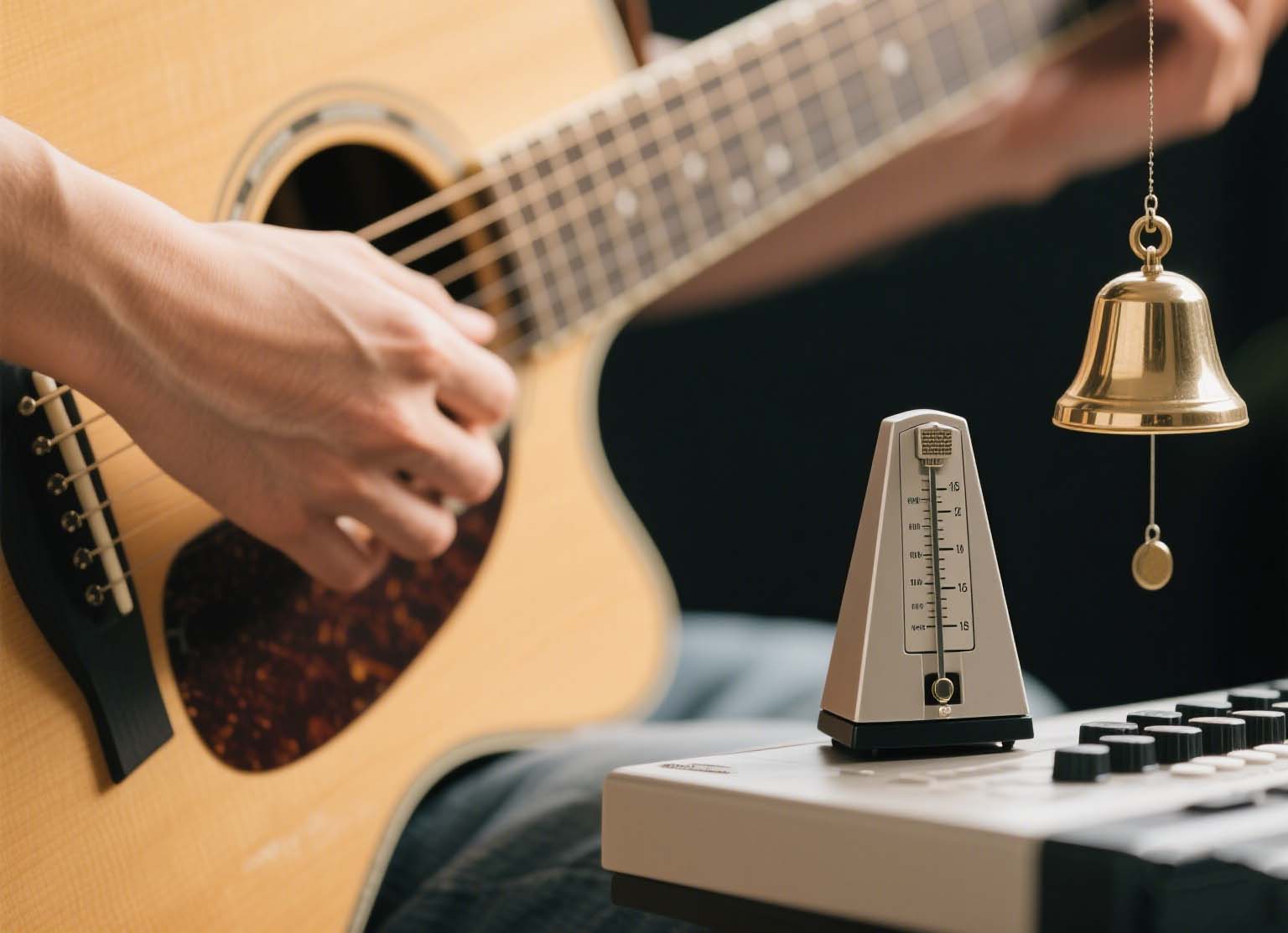I. Understanding Odd Time Signatures
1. The Structural Framework
Odd time signatures contain an asymmetrical number of beats per measure, creating rhythmic tension and interest. The most common odd meters include 5/4 (five quarter notes per measure), 7/8 (seven eighth notes per measure), and 11/8 (eleven eighth notes per measure). Understanding these signatures requires recognizing their internal grouping structures. For example, 5/4 is typically felt as either 3+2 or 2+3 groupings, while 7/8 can be organized as 2+2+3, 3+2+2, or 2+3+2.
2. Cultural and Historical Context
Odd time signatures appear across diverse musical traditions: Balkan folk music (featuring complex 7/8, 9/8, and 11/8 dance rhythms), Indian classical music (with tala cycles like Jhaptaal's 10-beat structure), progressive rock (exemplified by King Crimson's use of 5/4 and 7/4), and contemporary jazz (as in Dave Brubeck's iconic "Take Five" in 5/4). Studying these traditions provides valuable context for your practice approach.
II. Metronome Strategies for Basic Odd Meters
1. The Subdivision Method for 5/4
Begin with 5/4 time, one of the most accessible odd meters. Set your metronome to a moderate tempo (60-72 BPM) and follow this progression:
- Set your metronome to quarter notes and count "1-2-3-4-5" repeatedly, emphasizing beat 1.
- Identify the natural grouping that feels most comfortable: either 3+2 (ONE-two-three-FOUR-five) or 2+3 (ONE-two-THREE-four-five).
- Tap or clap the emphasized beats (the "ONE" and "FOUR" in a 3+2 grouping) while the metronome marks all five beats.
- Practice simple melodies or scales in this meter, maintaining awareness of the grouping structure.
2. The Accent Pattern Technique for 7/8
For 7/8 time, employ the accent pattern technique:
- Set your metronome to eighth notes at a moderate tempo.
- Count "1-2-3-4-5-6-7" repeatedly, with the metronome marking each eighth note.
- Practice the three common grouping patterns: 2+2+3 (ONE-two-THREE-four-FIVE-six-seven), 3+2+2 (ONE-two-three-FOUR-five-SIX-seven), and 2+3+2 (ONE-two-THREE-four-five-SIX-seven).
- For each pattern, tap or play only on the first beat of each grouping while counting all seven beats.
- Gradually incorporate melodic and harmonic elements while maintaining the rhythmic structure.
III. Advanced Odd Meter Training
1. The Modulation Method
To develop fluency across different odd meters, practice metric modulation:
- Begin with a comfortable odd meter (e.g., 5/4) at a moderate tempo.
- Set your metronome to mark only the downbeat (beat 1) of each measure.
- After 4-8 measures, transition to a different odd meter (e.g., 7/8) while maintaining the same pulse for the underlying beat unit.
- Practice smooth transitions between meters: 5/4 to 7/8, 7/8 to 11/8, etc.
- Gradually reduce the number of measures between transitions: 4 measures, then 2, then 1.
2. The Polymetric Superimposition Exercise
Develop deeper metric understanding through polymetric practice:
- Set your metronome to a steady quarter note pulse.
- While the metronome plays in 4/4, practice playing or counting in 5/4, creating a 5:4 polymetric relationship.
- Note that the patterns will align every 20 beats (least common multiple of 4 and 5).
- Try other combinations: 3/4 against 5/4, 7/8 against 4/4, etc.
- Use different limbs or voices to express each meter simultaneously (e.g., foot tapping in 4/4 while hands play in 5/4).
IV. Instrument-Specific Applications
1. Rhythm Section Instruments (Bass, Drums, Guitar)
For rhythm section players, develop these essential odd-meter skills:
- Practice ostinato patterns that clearly outline the grouping structure of each odd meter.
- Use the metronome to mark only downbeats while you fill in the subdivisions.
- Work on transitioning between different grouping patterns within the same meter (e.g., shifting from 2+3 to 3+2 in 5/4).
- Develop a vocabulary of fills and transitions that work specifically in odd meters.
2. Melodic Instruments
For melodic instrumentalists, focus on these approaches:
- Practice scales and arpeggios in odd-meter groupings (e.g., ascending in groups of 5 or 7).
- Compose and practice short melodic phrases that emphasize the natural stress patterns of each odd meter.
- Use the metronome to mark only the primary pulses (e.g., beats 1 and 4 in 7/8 with a 4+3 grouping).
- Transcribe and analyze solos from recordings that feature odd meters.
V. Compositional and Improvisational Applications
1. Creating Rhythmic Interest
In composition and improvisation, odd meters offer unique expressive possibilities:
- Use the metronome to explore different tempos and groupings for the same odd meter, noting how each affects the musical character.
- Practice metric displacement by shifting phrases across bar lines while maintaining the odd meter.
- Experiment with hemiola effects by superimposing different groupings over the established meter (e.g., playing groups of 2 over 5/4).
- Develop transitions between odd and even meters for compositional contrast.
2. Practical Performance Strategies
When performing in odd meters:
- Develop clear physical gestures (foot taps, head nods) that internalize the grouping structure.
- Practice with a metronome that emphasizes only the downbeats to strengthen your internal sense of the complete pattern.
- Record yourself playing with a metronome, then practice with your recording to identify any timing inconsistencies.
- When performing with others, establish clear visual and aural cues for navigating complex meter changes.
Note: Begin odd meter practice at moderate tempos (60-80 BPM) and increase speed only after achieving consistency. Apps like Time Guru or Odd Meter Metronome can provide specialized click patterns for odd time signatures.






